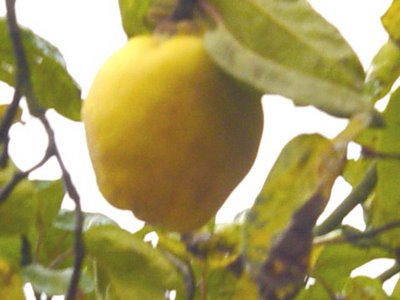 Flaming June
Flaming Juneis the name of a painting by British Artist Frederick Leighton (1830 - 1906), which is also known as The Mona Lisa of the Southern Hemisphere on account of its residence in the Museo de Arte de Ponce in Puerto Rico. Andrew Lloyd Webber wanted to buy the painting in the early 60s, but being only 15 years old couldn't come up with the £50 asking price. He has since offered six million for it but the Puerto Rican authorities will not sell the painting (click on the Webber link to read the whole story). You can currently see the painting at the Prado in Madrid, where it is on loan until June 21st. June 21st, fittingly, is also the longest day of the year, and the celebrations for the Summer Solstice (Winter Solstice in the Southern hemisphere) or Litha, or Midsummer Night, or St. John's Night take place around this time. (June 24th is the birthday of St. John the Baptist, which used to be the longest day before the Gregorian calendar.)
And, fittingly again, Midsummer's Eve celebrations, pagan as they were in origin, involved bonfires. They were lit to protect against evil spirits which were believed to roam freely when the sun was turning southwards again. In later years, witches were also thought to be on their way to meetings with other evil powers.

The lighting of bonfires is still part of the festivities in many countries, such as Britain, France, Germany, Ireland, Latvia, Norway, Portugal, Spain, Russia, Ukraine, and Estonia. In some rural spots, these bonfires are occasionally lit on hilltops, and the ritual of jumping over it in order to guarantee prosperity and avoid bad luck, is also still part of the celebrations in some areas, a pagan fertility rite, which has been accepted into the Christian calendar. How much it has been 'Christianised', can also be seen in the naming of the fires after St. John (for instance le feu de la Saint-Jean; Johannisfeuer), as well as the naming of the eve/day:
St. John's Eve (Britain), Jonines (Lithuania), Jonsok/Sankthansaften (Norway), Noc Swietojanska (= St. John's Night; Poland), San Juan (Spain), Ivan Kupala (= the old Russian name for St. John; Russia), Juhannus (Finland), Sankt Hans Aften (Denmark), Jaanipäev (John's Day; Estonia), Jani (Latvia), Gol-Jowan (Feast of St John; Cornwall)
According to Wikipedia, where I got most of this information, in Finland, Estonia and Sweden, Midsummer's Eve/Midsummer's Day (Swed.: Midsommarafton/Midsommardagen), is considered the greatest festival of the year, comparable only to Walpurgis Night, Christmas Eve, and New Year's Eve.
Some believe that Midsummer is a very potent night, one of the times of the year when magic is strongest, and it has certainly proved inspirational.
Gogol wrote a short story called St. John's Eve (1831), which inspired Modest Mussorgsky to create his Night on Bald Mountain, and Shakespeare gave us Midsummer Night's Dream, which in turn sparked numerous adaptations:
The Fairy-Queen (1692) by Henry Purcell is a set of baroque masques, or semi-operas, metaphorically related to the play.
Felix Mendelsohn composed the incidental music for a German stage production, which includes his famous Wedding March (1842/3).
Carl Orff wrote another piece for the play, Ein Sommernachtstraum (performed in 1939; re-worked '52 & 62), after Mendelssohn's music had been banned by the Nazis.
Ibsen wrote a drama, also called St. John's Eve (1852/3), influenced by the earlier play and the fairy-tale comedies by the German Romantics.
The choreographers Marius Petipa, Frederick Ashton and George Balanchine all created ballet versions. In fact, Ashton's The Dream is being shown this month at the Birmingham Hippodrome as part of a Triple Bill called Love & Loss.
Benjamin Britten and Peter Pears turned it into an opera in 1960,
and progressive Rock guitarist Steve Hackett, best known with his work with Genesis, made a classical adaptation of the play in 1997.
Then there are the FILM versions... One of them, directed by Peter Hall, in 1968, features a nearly naked Judi Dench as Titania opposite Ian Richardson as Oberon, with Ian Holm as Puck - all of them painted green.
This list is of course not at all exhaustive. For even more information, see here.
If you've managed to bear with me so far, you might be in need of a drink by now, and what could be better than Pimm's on a First of June, which has been flaming indeed.
You have seen it before, I'm sure, but just as a reminder, this is how you make your own version of the alcohol content of the Pimm's:
Cheat's Pimm's1 part gin
1 part red vermouth
1/2 part Bols Orange Curacao/Cointreau/Grand MarnierThen use 1 part of it to at least 3 parts of lemonade, plus apples, strawberries, cucumber and mint, and start enjoying the longer evenings! Cheers!


























+crpped.jpg)
